Proven Track Record
Sunnyside Corals has a long track record of successfully growing a large variety of corals. Currently, we have over 400 different types of corals growing in our systems. While having success with a large variety of corals, our main focus and success has mainly been with Acropora. The setup that we describe in the post will be mainly focused on growing Acropora but, we do also include our lighting setup for our LPS and Softy tanks as well. This post explains exactly what lighting we use and why so that you can replicate the success that we have. However, please note, that this is not the only way to do your lighting but just how we have found the greatest success in growing a large variety of corals, especially Acropora.
Our Lighting Set up
Over the years we have tried and tested a wide variety of different types and have ultimately chosen to use a Radion and T-5 combo. We use Radion gen 3s and 4s for the most part but still run a few gen 2s. We use the ATI Blue Plus Bulbs with our T-5s. We found that by running a combination of Radions and T-5s we have the best success with coloration and growth with our corals, especially Acropora. If you want to successfully grow lots of Acropora this is the setup that we recommend. However, if you only want to grow mainly LPS and Softy Corals with only a few acros, you can be successful with just running Radions and no T-5s. The problem with only running radions for an acro heavy tank is that you run into issues with the amount of light spread. Your acros will appear colorful on top but dull and brown on the underside. This will affect the acro as it grows into a colony as the base will not receive enough light and may affect growth. The way to combat that is by either having a higher concentration of Radions or adding a T-5 light. Often times people favor adding T-5s because they are known to perform well but also you can save a lot of money because T-5s are a fraction of the price of radion lights.
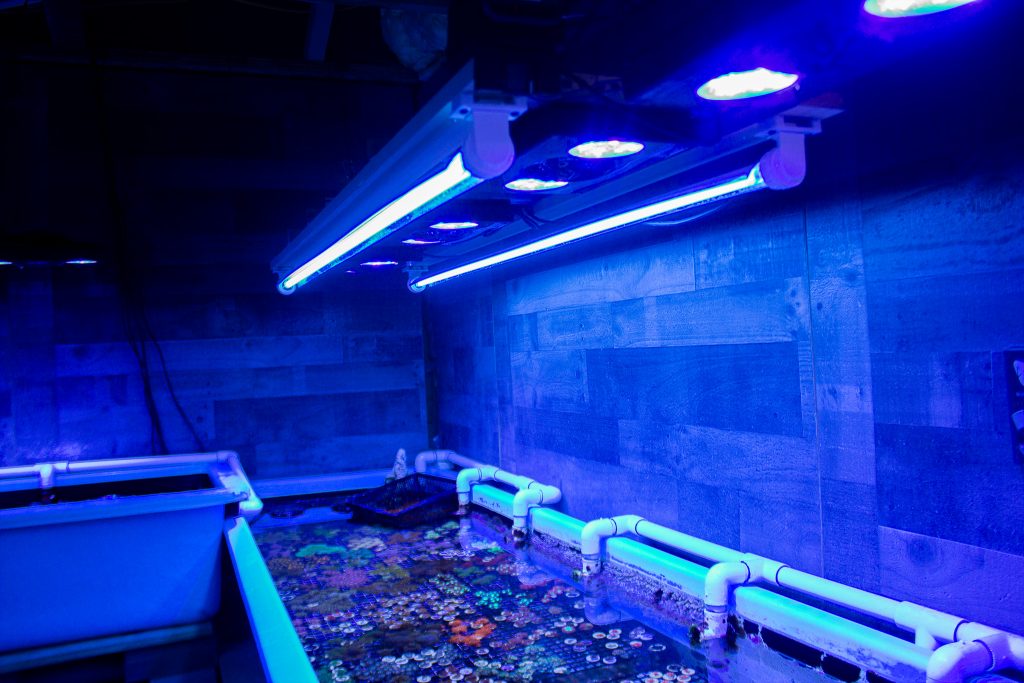
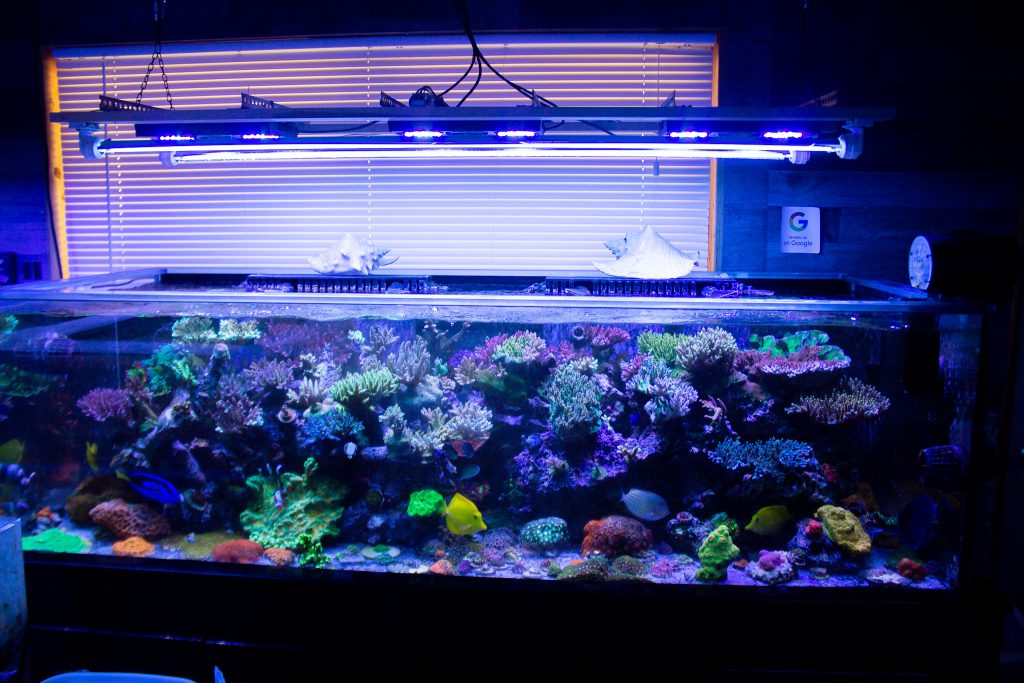
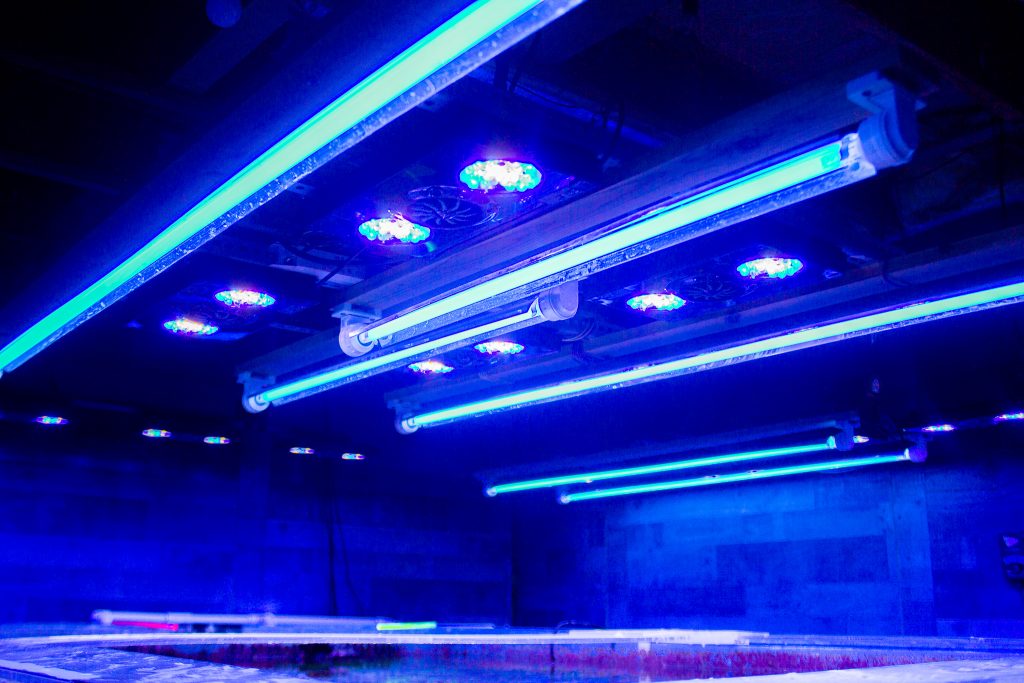
The Best Acropora Lighting
Acropora coral need a lot of light and as mentioned before a mixture of T-5s and Radions or a higher density of Radions is going to be best. We have our lights set up 12 to 16 inches above the tanks. This allows for there to be less heat transferred to the tanks but keeps the intensity of the lights strong. Here is a breakdown of our lighting above all of our Acropora and SPS tanks.
Radions: Below is our schedule for our radions. To start out we have a steep ramp-up period where we just blast the corals with a strong blue at 90% brightness and 90% intensity. We then transition into adding a small amount of whites, greens, and reds over the next hour. Our whites we bump up to 20% with the green and red run at only 5% strength. We run this setting for around 4 hours before we start to ramp it down again. During our final ramp down we switch back to heavy blues with no whites, reds, or greens at all. This ramp-down lasts for about another 4 hours for a total cycle time of 12.5 hours.
T-5s: Our T-5s are run mostly during the peak when we are running all blues with a mix of whites, reds, and greens. We run it for the same 7 hours or so and just run it on a manual timer that kicks on at the same time each day.
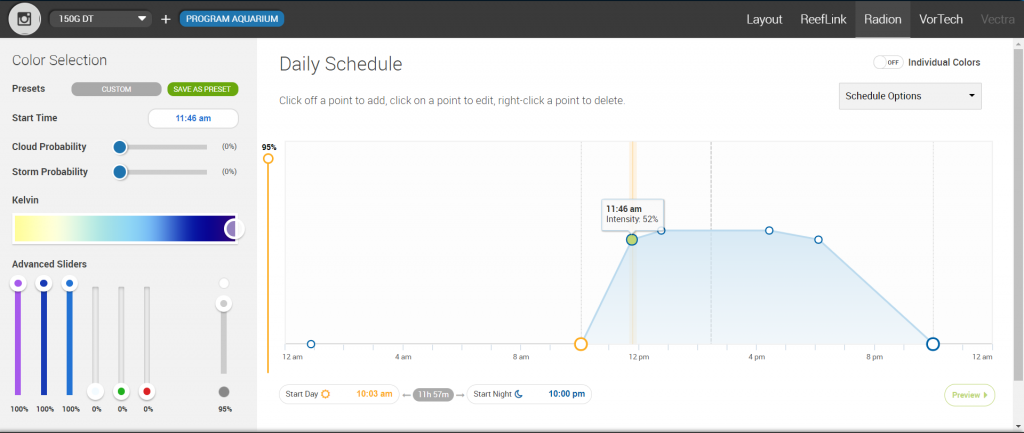
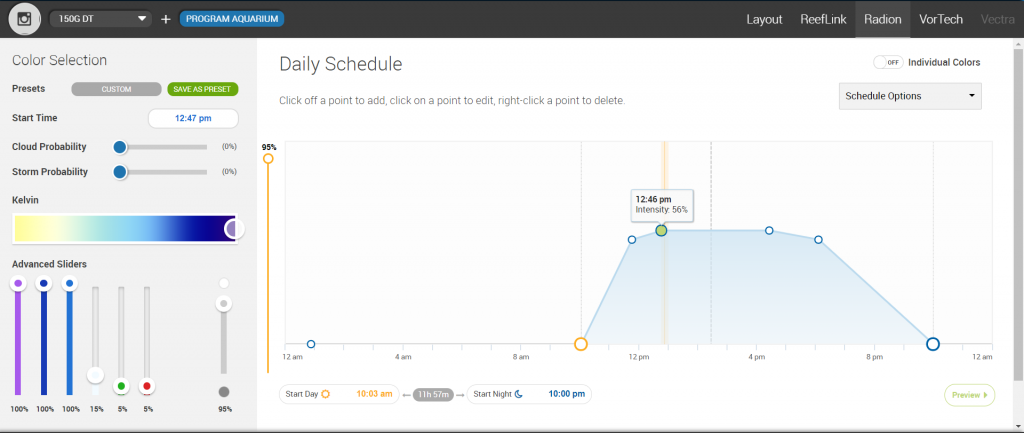
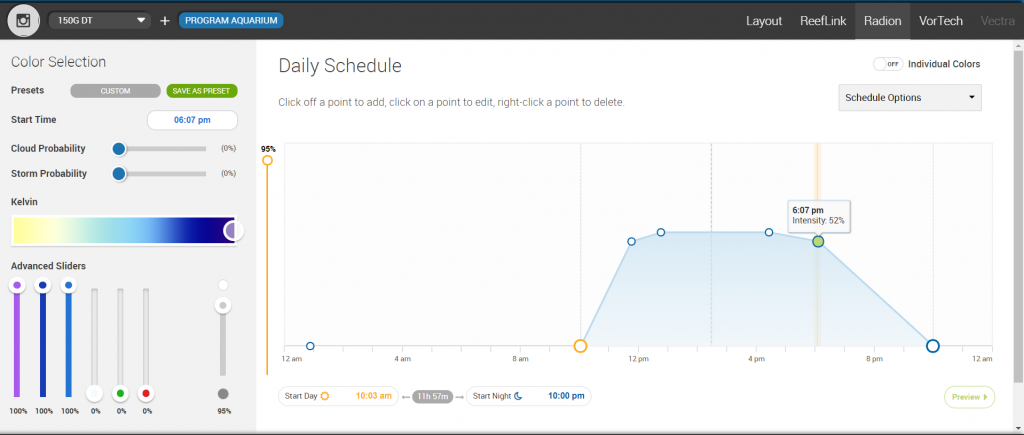
The Best LPS and Softy Tank Lighting
LPS and Softy corals don’t need nearly as much light as Acropora. On most of our tanks that do not have any acropora we hang the lights a little higher and run them at 85% intensity instead of 90% like we do on our SPS tanks. Our lights are hung as high as 24 inches above the water line for all of our LPS and Softy tanks.
Radions: Below is our schedule for our radions. To start out we have a steep ramp-up period where we just blast the corals with a strong blue at 85% brightness and 85% intensity. We then transition into adding a small amount of whites, greens, and reds over the next hour. Our whites are set to only 10% while green and red are as low as 5% strength. We run this setting for around 4 hours before we start to ramp it down again. During our final ramp down we switch back to heavy blues with no whites, reds, or greens at all. This ramp-down lasts for about another 4 hours for a total cycle time of 12.5 hours.
T-5s: We don’t run T-5s over most of our Softy and LPS tanks, however, we have seen that some LPS and Zoanthids do also benefit from having t-5s as well. For the tanks that we do have T-5s, we run them during the peak for about 7 hours on a timer. If you look at the schedule below, we would run our t-5s from about 12 PM until 7 PM for example.
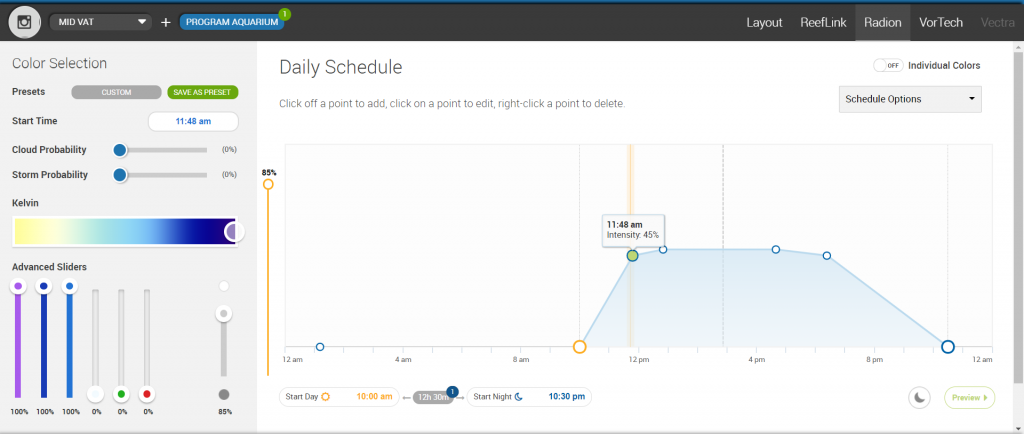
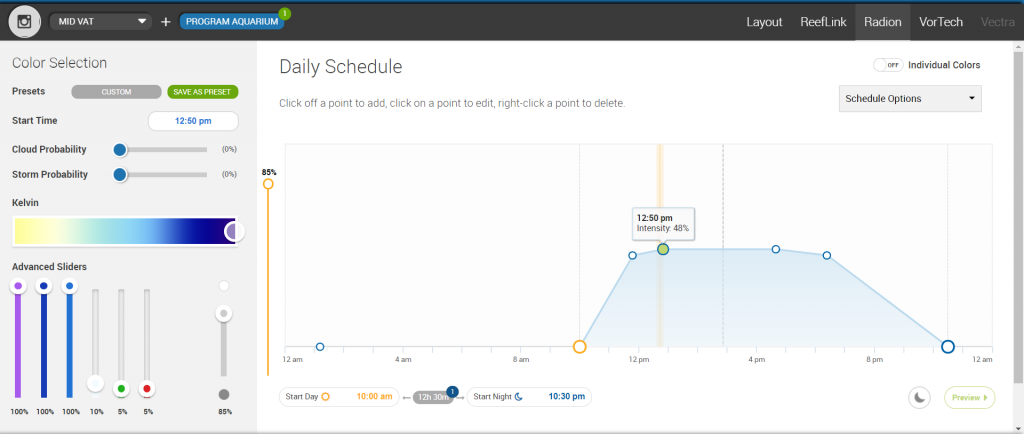
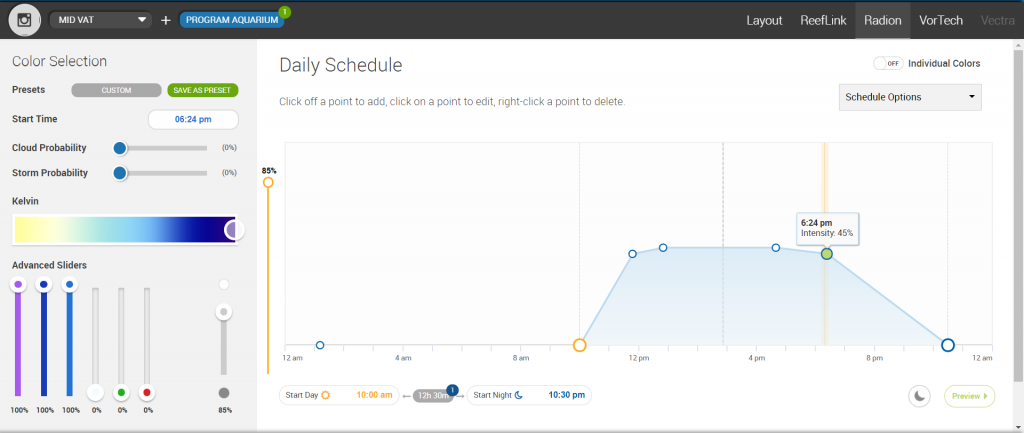
Best Tank Lighting With Limited Space
Not everyone has space to put their lights up 24 inches. We have one tank that is set up with two radion gen 4s that are mounted using RMS XR30 G4 TANK MOUNT KIT that hangs close to the water. The cons with this is first, it emits a lot of heat onto the tank and can make it hard to keep a constant temperature. It also can make it so your intensity needs to be dialed way back. Our tank also has a mesh screen covering it which blocks a large portion of the light. Here are the settings that we use for this tank and have seen our LPS and Mushrooms do great with.
Radions: Below is our schedule for our radions. To start out we have a steep ramp-up period where we just blast the corals with a strong blue at 80% brightness and 55% intensity. We then transition into adding a small amount of whites, greens, and reds over the next hour. Our whites are set to only 20% while green and red are as low as 5% strength. We run this setting for around 4 hours before we start to ramp it down again. During our final ramp down we switch back to heavy blues with no whites, reds, or greens at all. This ramp-down lasts for about another 4 hours for a total cycle time of 12.5 hours.
T-5s: We don’t run T-5s over this tank because we are not growing any SPS corals and for the setup would not be as esthetically pleasing. We only grow LPS and Softies in this tank.
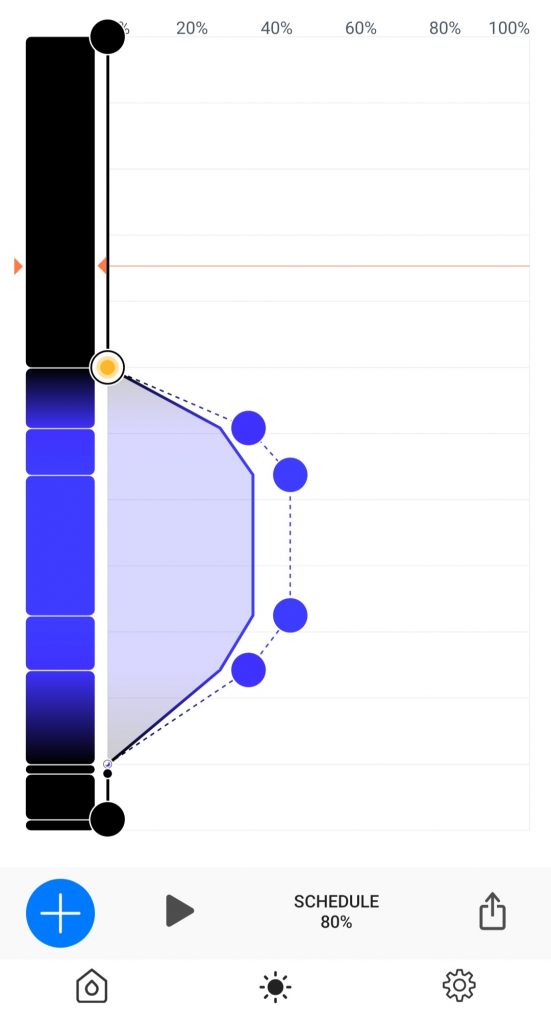
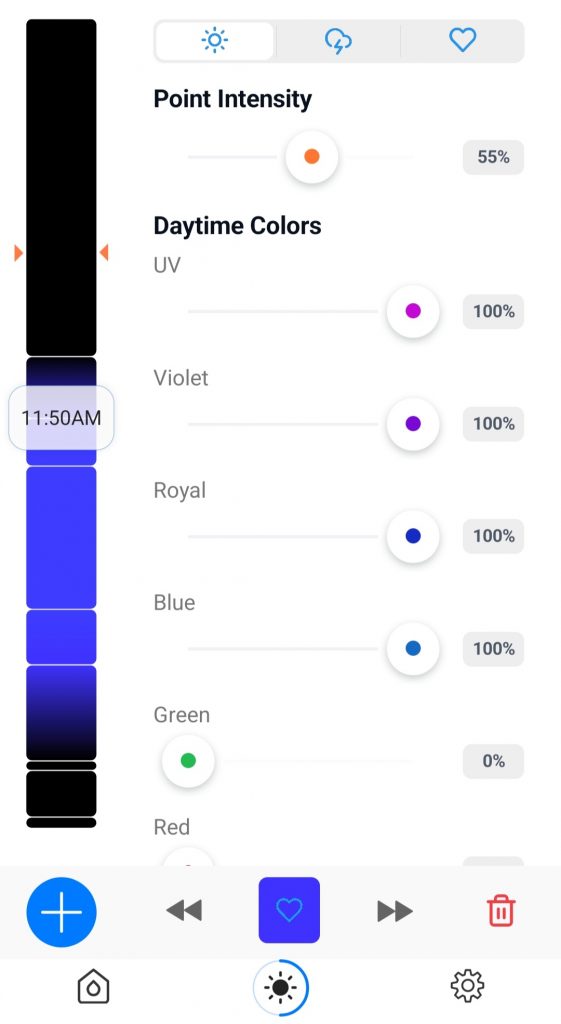
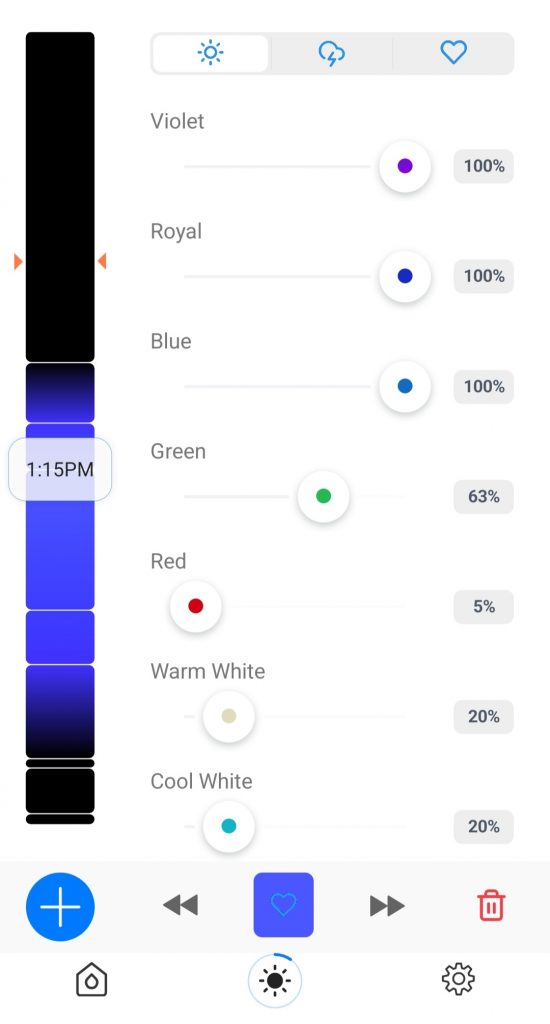
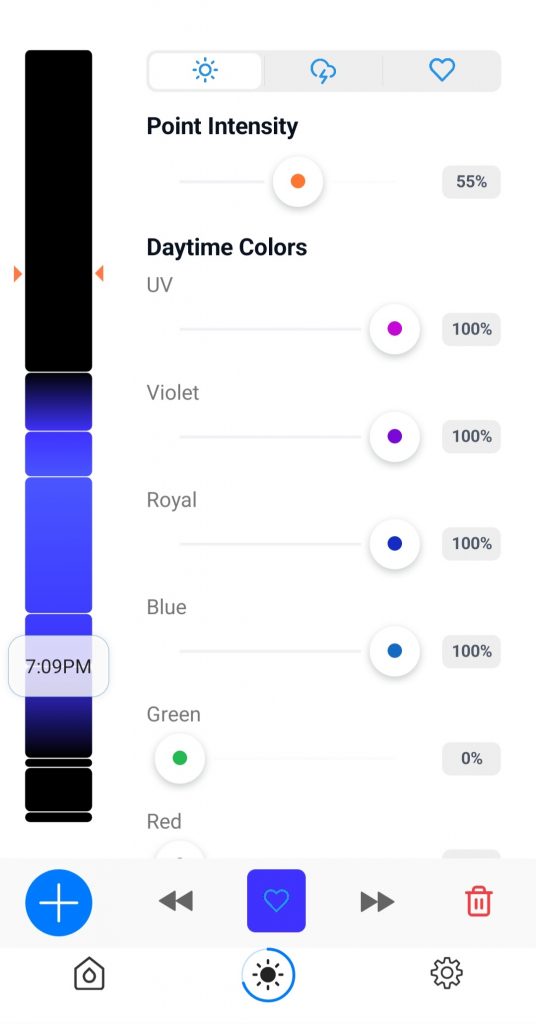
Every Tank Is Different
Remember that every tank and setup is different. We have found that these settings and setup work best for us but we are always experimenting and adjusting as our corals grow and we get new stock. Some corals will love this setup and others may not however, we have been able to successfully grow more than 400 different types of coral using this setup and general lighting schedule. Please, reach out to us if you have any questions and one of our experts will be happy to help you.
